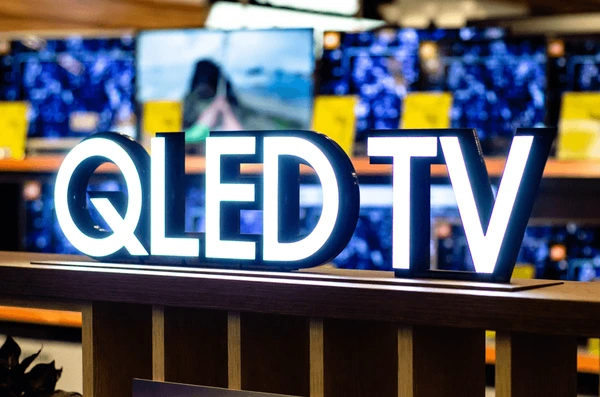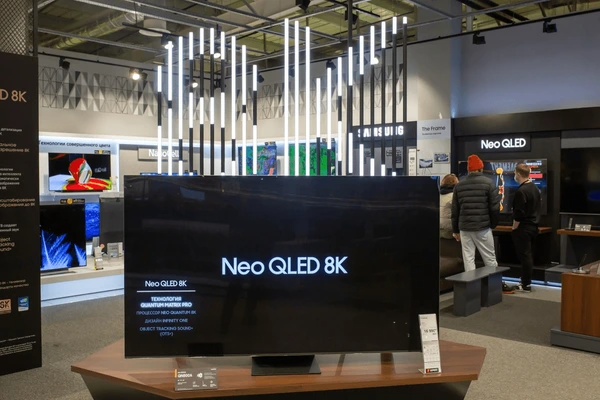
As consumers seek superior viewing experiences, the market for high-definition televisions continues to evolve. Two of the most talked-about technologies in this realm are QLED vs. UHD. But what exactly are these terms, and how do they differ? In this article, we’ll compare QLED (Quantum Dot LED) and UHD (Ultra High Definition) based on performance, visual quality, technology, and use cases. Drawing insights from top industry reviews and expert opinions, we’ll break down what each technology offers and help you decide which one suits your needs best.
What is QLED?
QLED, or Quantum Dot Light Emitting Diode, is a display technology developed primarily by Samsung. It uses quantum dots—tiny semiconductor nanocrystals that emit different colors depending on their size—layered between a backlight and a traditional LCD panel. This technology enhances the brightness and color accuracy of the display, offering a richer and more vibrant viewing experience.

Key Features of QLED
- Quantum Dot Technology: Delivers brighter colors with higher accuracy.
- Enhanced Brightness: QLED panels are known for their high brightness levels, often exceeding 1000 nits or more, making them ideal for well-lit rooms.
- Color Volume: With quantum dots, QLED TVs offer a wider color spectrum and more saturated colors, especially in high dynamic range (HDR) content.
- Longer Lifespan: The backlight used in QLED TVs tends to last longer compared to OLED displays, without the risk of burn-in issues.
- Available Sizes: QLED TVs come in a range of sizes, making them suitable for various spaces.
Applications of QLED
- Bright Environments: Perfect for rooms with plenty of natural light or artificial lighting due to its higher brightness output.
- HDR Content: Ideal for watching HDR (High Dynamic Range) content, as the vivid colors and high brightness enhance contrast and detail.
What is UHD?
UHD, or Ultra High Definition, is a resolution standard that refers to displays with a resolution of 3840 x 2160 pixels, which is four times the resolution of Full HD (1920 x 1080 pixels). UHD is a general term for ultra-clear and highly detailed resolution, but it doesn’t refer to a specific display technology like QLED, OLED, or LED-LCD. Rather, it is a category that encompasses several types of displays, including QLED, LED, OLED, and others, as long as they meet the UHD resolution standard.

Key Features of UHD
- Resolution: UHD provides four times the pixel density of Full HD, ensuring sharper and more detailed images.
- Pixel Density: More pixels mean more detail, making it perfect for large screens and close-up viewing.
- Future-Proofing: UHD is the current standard for new content, such as 4K Blu-ray discs, streaming services like Netflix, and gaming consoles like PlayStation 5 and Xbox Series X.
Applications of UHD
- Large Screens: UHD resolution shines on larger screens, where lower resolution might make images look pixelated.
- Streaming and Gaming: Streaming platforms like Netflix, Amazon Prime Video, and Disney+ offer 4K UHD content, and modern gaming systems also support 4K gameplay.
Key Differences Between QLED and UHD
At first glance, QLED and UHD may seem interchangeable, but they are fundamentally different in terms of what they represent.
Resolution vs. Technology
- UHD is a resolution standard: It simply defines the pixel density, which results in higher clarity and detail. UHD refers to any TV that has a 4K resolution (3840 x 2160).
- QLED is a display technology: It improves color accuracy, brightness, and contrast through the use of quantum dots. A QLED TV can have UHD resolution, but not all UHD TVs are QLED. For example, LED-LCD TVs can have UHD resolution without employing quantum dot technology.
Color Accuracy and Brightness
- QLED TVs stand out with their superior color accuracy and brightness due to quantum dot technology. This makes them ideal for bright environments and HDR content.
- UHD TVs can vary in color performance depending on the panel type. While the resolution is superior, the overall picture quality will be determined by the display technology behind the UHD screen (e.g., QLED, LED, OLED).
Contrast and Black Levels
- QLED TVs deliver excellent contrast levels, especially with high brightness. However, they may struggle with true black levels because of the backlight.
- OLED TVs (not UHD, but often paired with UHD resolution) have perfect black levels due to their ability to turn off individual pixels. While UHD TVs can be paired with various panel technologies, QLED often lacks the deep blacks that OLED offers.
Real-World Examples: QLED vs UHD in Action

Gaming
In gaming, resolution (UHD) is critical for a clear and detailed image, especially on larger screens. However, a QLED display enhances the experience with HDR support and vibrant colors, making it a great choice for 4K gaming. Games with fast action and high dynamic range benefit from the increased contrast and color accuracy of QLED TVs.
- Case Study: The Samsung QN90A is a QLED TV with a UHD resolution. It provides outstanding gaming performance with 120Hz refresh rates, low latency, and HDR support, perfect for gamers using the latest consoles or PCs.
Content Creation
For content creators, such as video editors and graphic designers, color accuracy is paramount. QLED TVs, with their superior color volume, outperform regular UHD displays in this domain. The Samsung Q80T QLED offers professional-grade color accuracy and brightness, which is crucial for creators working on 4K video projects or photo editing.
- Case Study: The Sony Bravia XR A90J OLED, despite being a UHD TV, offers perfect black levels and exceptional color reproduction, making it the preferred choice for professionals who prioritize absolute image fidelity.
Streaming Services
For streaming in UHD resolution, services like Netflix and Amazon Prime offer a wealth of 4K UHD content. However, having a TV that supports HDR (which is most commonly found in QLED TVs) will make a significant difference in the quality of the image. QLED TVs often support Dolby Vision and HDR10+, which significantly enhance streaming experiences.
- Case Study: The LG CX OLED provides UHD resolution and HDR support, offering a cinematic experience for streaming 4K movies with vibrant colors and deep blacks.
Choosing Between QLED and UHD: Which One Is Right for You?
Choose QLED if:
- You want superior color accuracy, brightness, and HDR performance.
- You typically watch TV in bright rooms or environments with natural light.
- You prefer a more durable display with no risk of burn-in.
Choose UHD if:
- You prioritize resolution for watching 4K content, gaming, or streaming.
- You’re looking for a future-proof TV that supports high-definition content, especially for large screens.
- You’re interested in OLED or other display technologies that pair well with UHD resolution.
Conclusion: The Verdict on QLED vs. UHD
In the QLED vs. UHD debate, QLED refers to a specific type of technology that enhances the visual experience, while UHD is a resolution standard that signifies the pixel density and clarity. The choice between QLED and UHD depends on your specific needs: if you’re after superior color accuracy, brightness, and HDR performance, a QLED TV with UHD resolution would be ideal. If you prioritize high resolution for large screens or streaming, a standard UHD TV may be sufficient.
Each technology has its strengths, and the right choice ultimately depends on your viewing environment, preferences, and intended use.
To get detailed scientific explanations of methyl calcium nitride, try Patsnap Eureka.

